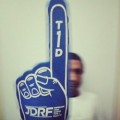You are here
News
2013
Feb 2013 Hearing those words from a doctor's mouth is completely devastating and immobilizing, often spurring the feelings of hopelessness, anxiety, fear and helplessness. Those words are spoken far too often. Every 15 minutes, a child is born with a congenital heart defect (1).
Despite the prevalence of congenital heart defects, public awareness and funding for research remains dismal. With a lack of resources and research, parents facing new diagnoses are often left in the dark, with little hope from even the medical community at large. In December of 2010, ten women came together to change that stigma - to offer hope in the midst of darkness.
Feb 2013 Many parents elect to save their newborn infant's umbilical cord blood in either a public cord blood bank that accepts free donations or a family cord blood bank that charges for private storage. Typically the first step towards banking cord blood is when the mother receives a collection kit that she must safeguard and have ready at the time of birth. This article explains the contents of collection kits and gives parents advice on how to keep them safe.
Feb 2013 Heart and vascular disease (or cardiovascular disease, CVD) are the leading causes of death and disability in the world, despite a large proportion of it being preventable.
In the US alone, 82.6 million Americans have some form of CVD. Someone dies from CVD every 33 seconds. More than 40,000 children are born each year with a congenital heart defect.
Jan 2013 Imagine this scenario. I have a closed box. It contains something very precious! It may change - strike that - it may save your child's life! I will take care of the box for as long as you want, for a fee. You just tell me when you need it. If you decide later that you don't want me to store the box any longer then you can walk away at any time. You might think "this sounds pretty great! But how do I really know that what I am paying for will do what you say? It sure would be better if I had something to give me more confidence". For all its wonderful prospects and demonstrated ability to save the lives of people with blood cancers and other diseases of the bone marrow, this is essentially the conundrum of private cord blood (CB) banking.
Jan 2013 JDRF is the leading global organization focused on type 1 diabetes (T1D) research.
Jan 2013 Diabetes is one of the most common chronic diseases affecting humans - the WHO estimates that around 350 million people have diabetes globally. Approximately 10% have Type 1 Diabetes (T1D), a condition where the patient's immune system causes damage to the insulin producing cells in the pancreas. There is currently no prevention or cure for T1D - but stem cells may be a promising new approach.






